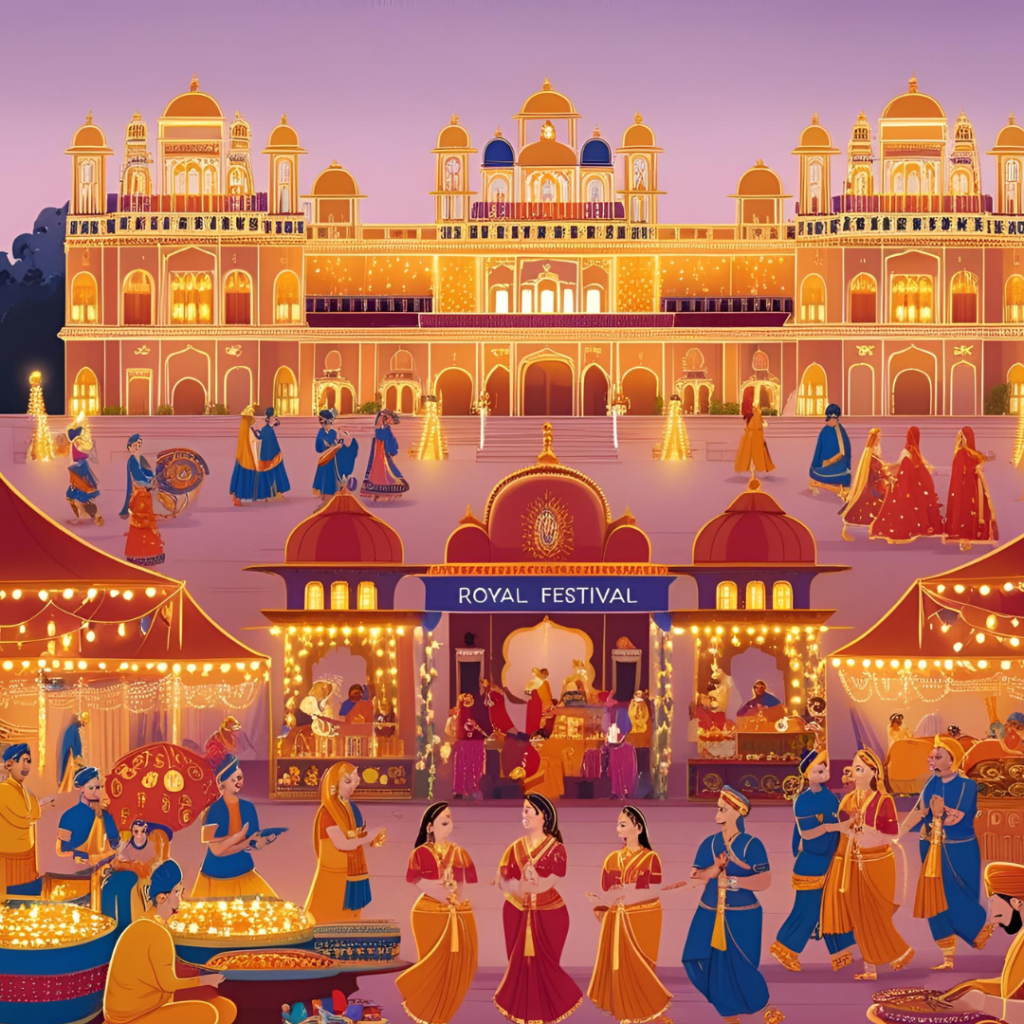The Royal Festivals of India: Traditions That Endure Through Time

Introduction
India is known for its colorful festivals, but some of these celebrations have royal origins that date back centuries. These festivals, once grand affairs in palaces and courts, continue to be observed with regal splendor. From the grand processions of Rajasthan to the unique traditions of South India, these festivals reflect India’s rich heritage and royal customs. Moreover, they serve as a reminder of the deep-rooted traditions that continue to thrive.
The Significance of Royal Festivals
Royal festivals were more than just celebrations; rather, they were a reflection of power, devotion, and community bonding. Kings and queens used these occasions to display their wealth, strengthen alliances, and uphold traditions that defined their reigns. Consequently, these festivals played a crucial role in shaping history.
Major Royal Festivals of India
1. Dussehra and Mysore Dasara
- Location: Mysore, Karnataka
- Highlights: The Mysore Dasara is one of India’s most celebrated royal festivals. The Wodeyar rulers initiated the grand procession featuring elephants, the idol of Goddess Chamundeshwari, and a regal display of dance and music. Furthermore, the entire city is adorned with lights, adding to the grandeur of the celebrations.
2. Holi in Udaipur and Jaipur
- Location: Rajasthan
- Highlights: The royal families of Rajasthan celebrate Holi with an elaborate bonfire ceremony (Holika Dahan), folk performances, and palace festivities. Additionally, visitors are often invited to witness these traditional celebrations firsthand, making it a unique cultural experience.
3. Diwali in Rajasthan and Uttar Pradesh
- Location: Various royal regions
- Highlights: The festival of lights is a significant royal festival. Palaces in Rajasthan and Uttar Pradesh illuminate with thousands of lamps. Special rituals are performed in the temples inside these grand palaces. As a result, Diwali in these regions takes on an unparalleled level of magnificence.
4. Gangaur Festival in Rajasthan
- Location: Jaipur, Udaipur, Jodhpur
- Highlights: This festival, dedicated to Goddess Gauri, was historically celebrated by Rajput queens and women in royal households. Grand processions, decorated elephants, and cultural performances mark this occasion. In addition, these events attract thousands of tourists who come to witness the splendor.
5. Onam in Kerala
- Location: Kerala
- Highlights: Though primarily a harvest festival, Onam has royal origins tracing back to the legend of King Mahabali. The grand boat races, temple festivities, and royal feasts (Onam Sadya) are reminiscent of the traditions once observed in the Travancore kingdom. Moreover, the elaborate floral decorations add to the festival’s charm.
6. Teej Festival
- Location: Rajasthan
- Highlights: This festival, celebrated by Rajput women, includes elaborate palace ceremonies, swing decorations, and processions that showcase the grandeur of royal customs. Additionally, it serves as an important cultural event, strengthening familial and societal bonds.
The Modern-Day Celebrations of Royal Festivals
Many royal families and heritage organizations have ensured that these festivals retain their splendor. While some are now major tourist attractions, others continue to be celebrated privately within palatial estates. Moreover, hotels and palaces such as Umaid Bhawan, City Palace Jaipur, and Mysore Palace actively promote these festivities, inviting guests to experience regal traditions firsthand.
Conclusion
India’s royal festivals are more than just grand spectacles; rather, they are a continuation of centuries-old traditions that preserve the country’s cultural heritage. Whether celebrated within palace walls or in public processions, these festivals keep the royal legacy alive and offer a glimpse into India’s magnificent past. Furthermore, they serve as a bridge between the past and present, ensuring that these traditions endure for future generations.





